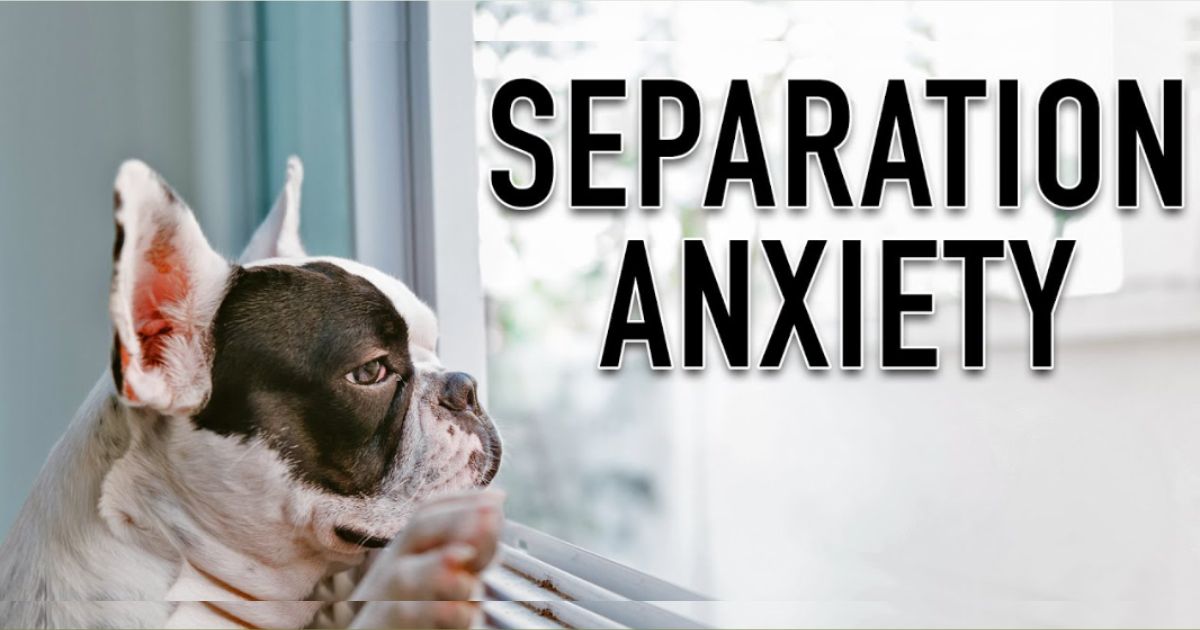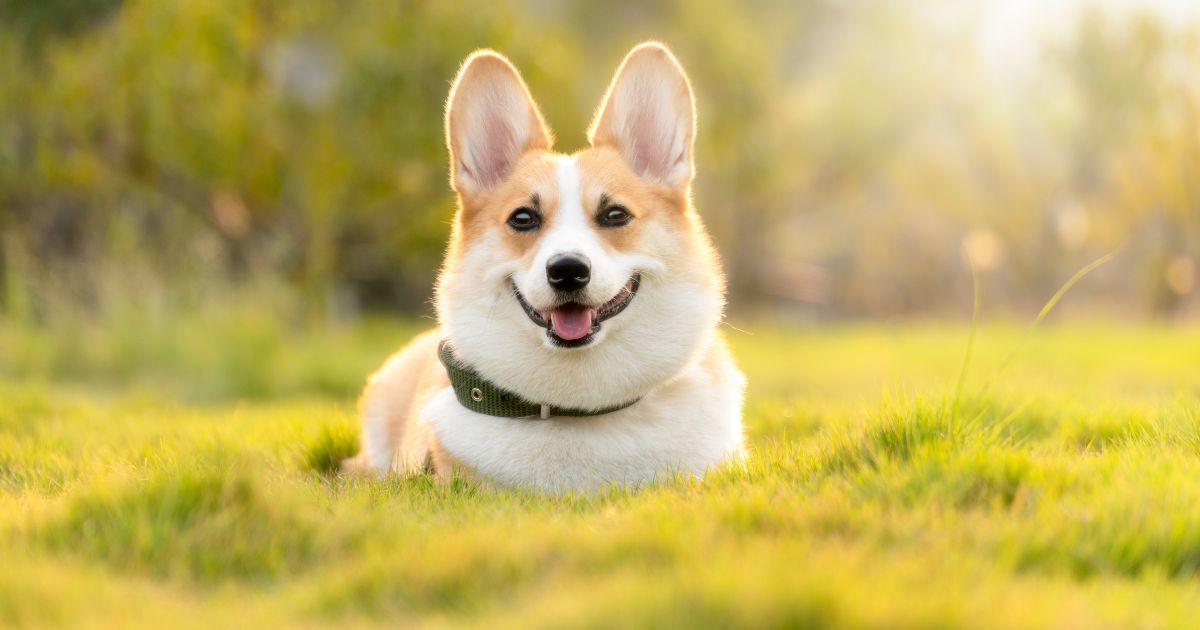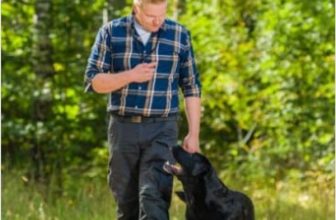
Separation anxiety is one of the most frequently encountered and unpleasant behavioral challenges confronting dog parents. As social animals, dogs are wired to prefer our company, but there are those who suffer severe anxiety when they can’t be with us. This may present as destructive chewing, barking, soiling, or even self-mutilation. The good news is, with the proper patience, understanding, and approach, you can help your dog overcome their anxiety and establish more confidence when left home alone. This blog will help you learn How to fix Separation Anxiety in Dogs.
This article is a comprehensive and step by step guide to curing separation anxiety in dogs, based on expert advice, and published scientific and medical information.
Recognizing Separation Anxiety Knowing the Signs
Separation anxiety is when a dog suffers from such distress when they are separated from their owners or primary caregivers. Typical signs include:
Chewing or Digging you find destructive
Barking, howling or whining for long or continuous periods of time
Attempts to escape
House breaking (urinating/defecating in the house)
Pacing, panting, or drooling
It is also critical to understand that these behaviors are not a product of disobedience, defiance, or an act of being mean-spirited. They are the manifestations of true psychological pain.
Step 1: Rule Out Other Causes
So before starting any treatment, be sure to visit a veterinarian to make sure there are no health issues or other behavioral problems that could mimic separation anxiety. House soiling or destruction may be related to medical problems, lack of exercise, lack of housetraining or a combination of these 3 reasons.
Step 2: Normalize Positive Alone Time
Counterconditioning
Counterconditioning involves replacing your dog’s fearful or anxious response to something with a positive, relaxed one instead by creating an association between being alone and good things. It works great for low levels of separation anxiety.
How to do it: When you leave, give your dog a puzzle toy filled with food or a long-lasting chew to chew on, says Herron. The treat should last for at least 20 – 30 minutes, keeping your dog busy and occupied while you’re travelling.
Note: Your pup should like the treat or toy while you are present too! If your dog won’t eat or play when they’re by themselves, their anxiety may be too high for this step as a stand-alone option.
Step 3: Baby Steps to Desensitivity
For moderate to severe separation anxiety, use a more structured intervention called systematic desensitization. Leave your dog alone for very brief periods at first, and then gradually increase the time over weeks of daily training to help your dog adjust to being alone.
How to Desensitize Your Dog:
Practice with short absences: Try walking out of your dog’s line of sight for just a second or two, then immediately returning, before your dog has a chance to become anxious. Do this repeatedly until your dog can lie down quietly.
Gradually lengthen the time: As your dog gets used to you being gone, slowly increase the time you’re away, always returning before she has time to become anxious. When you get to five to ten seconds, always give him a food-stuffed toy just before you go out, so he will associate departures with something pleasant.
Do daily: A little goes a long way. Gradually increase to several short sessions a day, and only extend your absences when your dog remains calm and relaxed.
Step 4: Desensitize Cues to Leave
Lots of dogs begin to panic. For example, when they see you picking up your keys or putting on your coat. Those reminders can provoke anxiety — before you even leave the house.
Learn some cues for departure: Pick up your keys, put your shoes on or take your bag, then sit back down. Do this and continue with a series of repetitions until your dog shows no more signs of stress.
Mix it up: Rethink your leaving routine to help your dog uncouple your departure cues from your actual departure.

How to fix Separation Anxiety in Dogs
Step 5: Establish a Safe, Nurturing Climate
Safe haven: Create a cozy, dog-proofed environment with your dog’s bed, favorite toys, and something with your scent3.
Special toys: Leave a special toy or a long-lasting chew that your dog gets only when by himself. This makes everyone associate your not being there with something good.
Background noise: Keeping on some rhythmic music or white noise can mask sounds from the outside and set the mood.
Exercise: Take your dog for a walk before you go so it is more likely to be tired and rest.
Step 6: Emphasize Independence
Children are capable of a lot when you trust them to do things by themselves.
Facilitate independence: Get your dog to rest in their safe space when you are home, too. Expand the amount of time you have them alone in another room, but reward them sitting calmly.
No dramatic departures/arrivals: Keep your greetings and goodbyes low key so you don’t inadvertently reinforce anxiety.
Step 7: Avoid Common Mistakes
Do not punish your dog: Punishment worsens anxiety and can drive the problem deeper.
Don’t use the crate as punishment: Only use a crate when your dog feels comfortable and safe there.
Take your time: Watch your dog closely, and only increase your time away when your dog stays calm and relaxed.
If you’re really struggling to sleep, or if your sleep problems have started to affect your personal or professional life, you might want to seek professional help.
Certain dogs need help beyond this method, particularly if they are highly anxious. Seek the services of a certified dog trainer or veterinary behaviorist with experience in positive reinforcement training.
Step 8: Medication
For moderate to severe cases, medication may be able to lower anxiety and make behavior modification more effective. Here are two FDA-approved drugs for dog separation anxiety:
Clomipramine (Clomicalm): A tricyclic anti-depressant that provides an increase of serotonin and norepinephrine. Its effects may take four to six weeks to become apparent.
Fluoxetine (Reconcile/Prozac): SSRI drug that increases serotonin levels, again requiring weeks for effects to be observed.
For situational anxiety, short-acting medications such as diazepam might be okay, but you should always consult with your vet before beginning or stopping a drug.
Step 9: Additional Tips
Doggy daycare or pet sitters: Where possible, aim to have your dog visited at the house or break up their time alone.
Interactive play:Before you leave to help relieve your dog’s anxiety during training or play dates with them.
Measure progress: Record your dog’s behavior improvements and setbacks in a journal.
Conclusion
Curing dog separation anxiety is not quick or easy, but it is possible. Begin by ensuring that being alone is a positive experience for your dog, and then slowly habituating him to the absence of another human being or another familiar dog. Serious cases may require professional treatment and medication. Progress can be slow, but with patience, you can help your dog feel secure and confident when you’re not home. How to fix Separation Anxiety in Dogs!
If you have a hard time or your progress stalls, reach out to a certified trainer or veterinary behaviorist for professional help. You and your dog can conquer your separation anxiety, with the proper help







